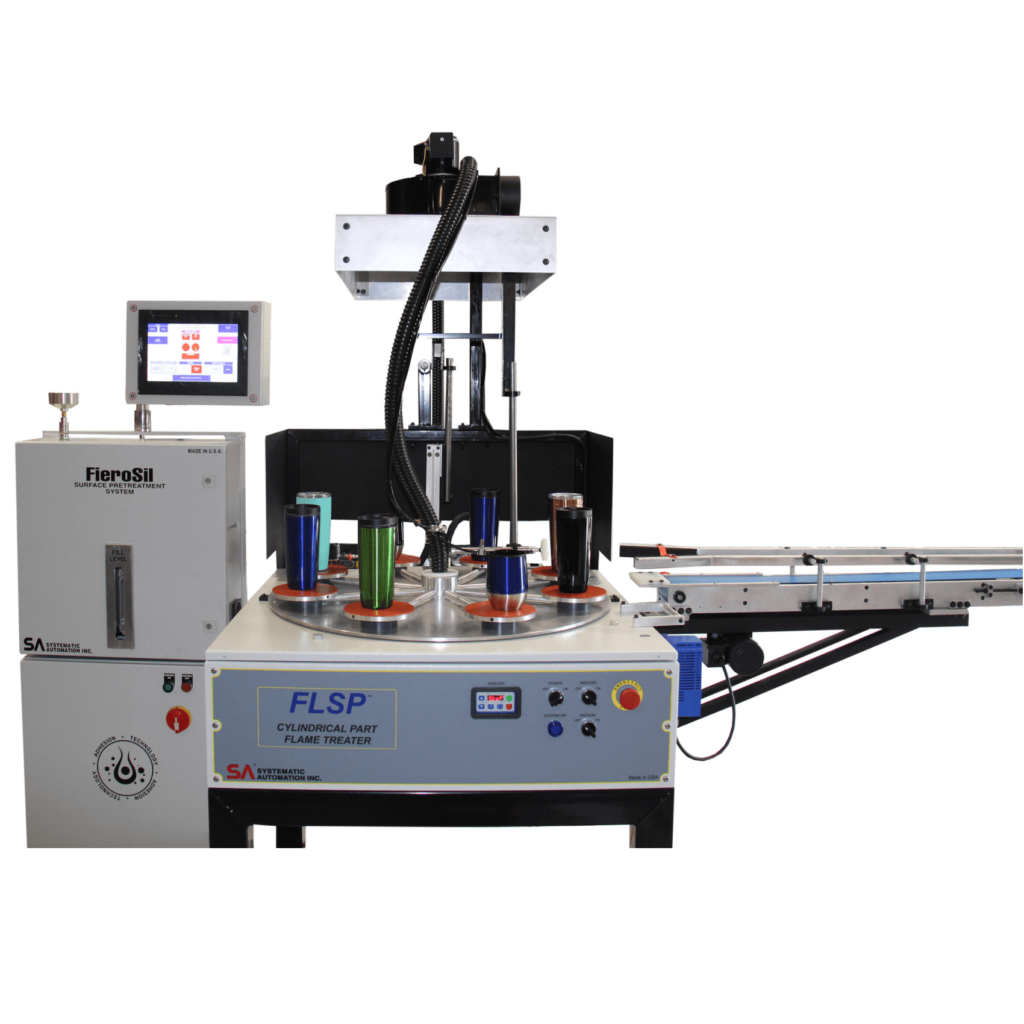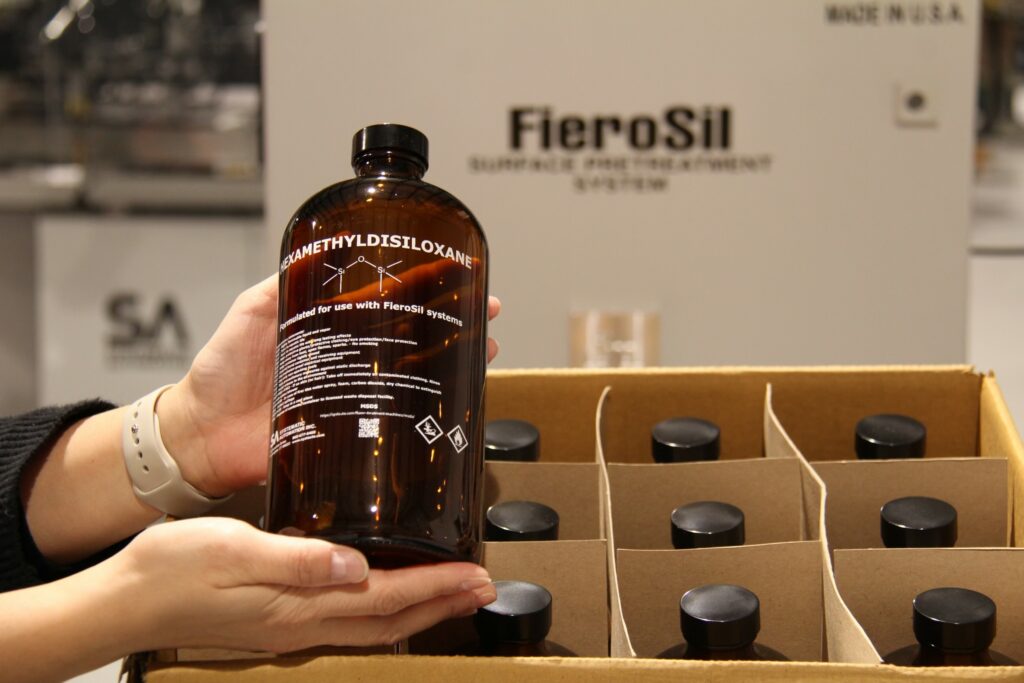The Fierosil Silica Pretreatment System will provide your images with opaque, durable and cost effectiveness results . Silica pretreatment stands as a cornerstone process, offering a myriad of benefits that elevate the quality and durability of printed designs. In this article, we delve into the importance of silica pretreatment before screen printing and explore why systematic automation emerges as the optimal choice for this critical step in the manufacturing process.
Understanding Silica Pretreatment
Silica pretreatment involves the application of a silica-based coating onto the surface of substrates before the commencement of screen printing. This preparatory step serves multiple purposes, each contributing to the enhancement of print quality and adhesion:
- Surface Modification: Silica pretreatment modifies the surface energy and roughness of substrates, facilitating improved ink adhesion and spreading. By creating a receptive surface, silica coatings ensure uniform deposition of ink, minimizing defects such as pinholes and streaks.
- Enhanced Durability: The incorporation of silica nanoparticles reinforces the substrate surface, imparting greater mechanical strength and chemical resistance to printed designs. This enhanced durability is particularly crucial in applications where the printed components are subjected to harsh environments or frequent handling.
- Improved Ink Compatibility: Silica pretreatment optimizes the wetting properties of substrates, enabling better compatibility with a wide range of inks. Whether it’s solvent-based, water-based, or UV-curable inks, pretreated surfaces offer enhanced ink adhesion and color vibrancy, resulting in sharper, more vivid prints.
Systematic Automation: A Game-Changer
In the realm of manufacturing, consistency is key. Systematic automation emerges as the ultimate solution for achieving precise and reproducible silica pretreatment before screen printing. Here’s why:
- Precision Control: Automated systems ensure the uniform application of silica coatings across substrates with micron-level precision. By leveraging robotic arms, precision dispensers, and advanced control algorithms, automated pretreatment lines eliminate variability and human error, guaranteeing consistent results batch after batch.
2. Scalability: As production volumes escalate, manual pretreatment methods become increasingly impractical. Automated systems offer scalability, allowing manufacturers to seamlessly ramp up production without compromising on quality or throughput. Whether it’s small-scale prototyping or high-volume production runs, automated pretreatment lines can adapt to the evolving needs of the industry.
3. Efficiency and Cost-Effectiveness: By minimizing material wastage and maximizing uptime, systematic automation enhances the efficiency of the pretreatment process, reducing overall production costs. Furthermore, automated systems optimize resource utilization, ensuring optimal usage of consumables such as silica coatings and cleaning solvents.
Improved Adhesion
One of the primary benefits of silica pretreatment is the improved adhesion of inks to the substrate. Silica particles create a micro-rough surface, increasing the surface area for the ink to bond, leading to prints that are more vibrant and long-lasting. This is particularly beneficial when printing on challenging materials such as plastics, glass, or metals, where ink adhesion can often be problematic.
Enhanced Print Quality
Silica pretreatment contributes to enhanced print quality by providing a more uniform and stable surface for the ink. This results in clearer, more precise prints with sharper details and more accurate color reproduction. The consistency provided by the pretreatment helps in reducing issues like bleeding or spreading of ink, ensuring that the final prints are crisp and clean.
Increased Durability
Silica pretreatment enhances the screen printing process’s versatility by making it more effective across a wider range of substrates. Whether dealing with porous, non-porous, smooth, or textured surfaces, the silica layer ensures consistent ink adhesion and quality. This opens up new possibilities for screen printing applications on materials that were previously considered unsuitable or challenging.
Prints that undergo silica pretreatment exhibit increased durability. The strong bond between the ink and the substrate, facilitated by the silica layer, makes the prints more resistant to physical wear, such as scratching or rubbing, and environmental factors like moisture or UV exposure. This makes silica pretreatment an excellent choice for items that require a longer lifespan or will be subjected to harsh conditions.
Eco-Friendly Options
Silica-based pretreatments can also align with eco-friendly practices in the printing industry. Many silica formulations are designed to be less harmful to the environment compared to traditional chemical treatments. By choosing environmentally friendly silica products, businesses can reduce their ecological footprint while still achieving high-quality prints.

